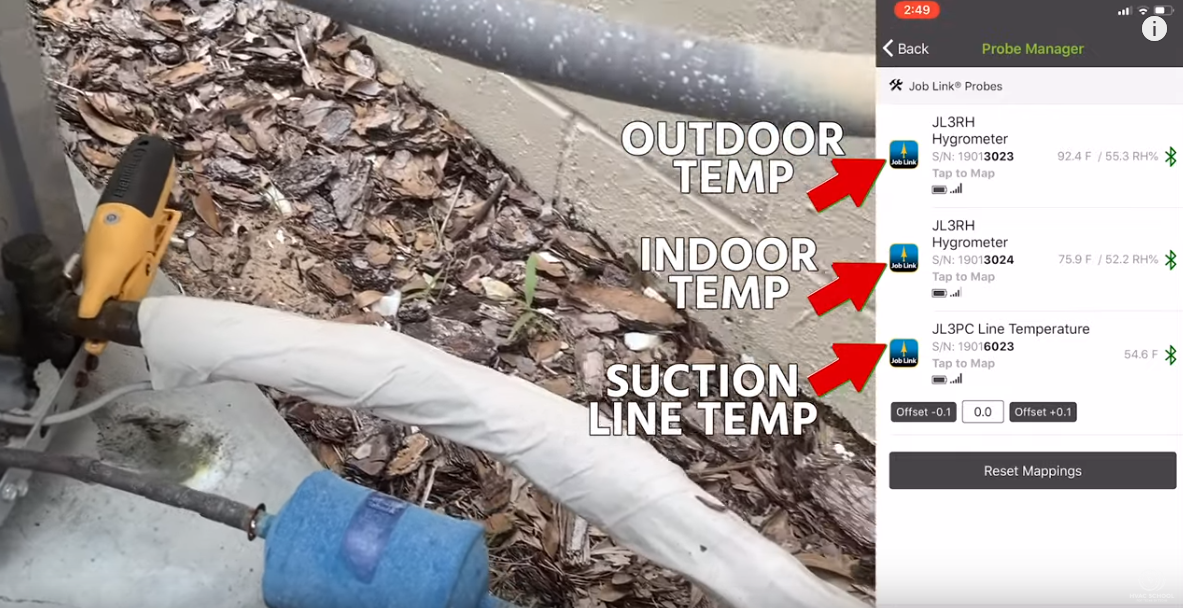Suction Line Temperature
October 11, 2019


The placement of your temperature probe can have a major impact on your temperature readings. The suction line will be colder near the evaporator and warmer near the compressor. Direct sunlight can also increase the temperature reading via radiant heat. All that said, we typically measure the suction line temperature and check our superheat near the condensing unit.
If you don’t connect gauges, you need to know the indoor return temperature. In most cases, the evaporator temperature (boiling temperature or suction saturation temperature/SST) is about 35 degrees below the indoor return temperature. So, if the indoor return temperature is 75 degrees, then you would get the typical rule-of-thumb 40-degree evaporator coil. However, the difference will vary a bit if you’re running a lower airflow for dehumidification purposes; colder coils are better for pulling the moisture out of the air.
To calculate the suction line temperature from the SST, we need to know our return air temperature (measured away from the evaporator coil), subtract 35 degrees, and add the superheat (set by the TXV). The total superheat (right before the compressor) is often 20 degrees, though some manufacturers also specify that they don’t want suction line temperature to exceed 65 degrees.
Compressors could be more likely to overheat if the suction line temperature exceeds 65 degrees. The superheat at the evaporator outlet on residential systems is typically around 10-12 degrees. The difference between the superheat at the evaporator outlet and the compressor inlet comes from the fact that the suction line picks up extra heat between the two locations. You can take all of these readings and do all of that math without connecting gauges.
Comments
To leave a comment, you need to log in.
Log In